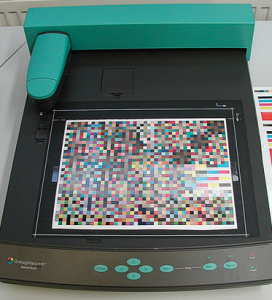When qualifying a print service provider (PSP) of large format graphics, beyond price, what criteria do you use to determine a qualified professional?
One qualifying principle is to find out whether or not your PSP is setting up custom color profiles. A color profile is the means of accurate color balance in today’s digital imaging workflow. A color profile is required for each type of paper (or other print media) per output device. New and improved print materials are always coming on the market, so the possibilities are endless. While most media manufacturer offer color profiles for the media they sell, they don’t always perform as well as an in-house custom color profile.
So as not to be confusing, allow me to sort out two similar sounding terms connected with color printing. One is color space and the other is color profile.
Color space pertains to preparing your file for submission. You will need to ask your PSP of large format graphics which color space the file should be in, RGB or CMYK? The determinant is the output device used to print your job. Different output devices have different color space requirements. In general, most output devices today favor the CMYK color space, with only a few exceptions requiring RGB. (Most digital image files originate as RGB, but are frequently submitted as converted CMYK files.)
Color space is not to be confused with the second term, color profile.
One color profile should be generated for each type of printing material per device. So depending on how many different print materials a particular output device will print to, determines how the number of different color profiles to be set up. Color profile software can be thought of as the old enlargers which required a certain percentage of color filtration dialed in to create a print from the supplied negative. Consider not only printing to different papers now in the digital printing world, but now also printing to different types of fabrics, plexiglass, metal or whatever. Each printing material has its own set of physical characteristics, including the suitability to reach full ink saturation. Each color profile is set up for each combination of materials and ink, enabling the printer to be prepared and ready-to-go when your file arrives.
In large format graphics production, the devices used to create these color profiles are a RIP for each output device and a spectrophotometer to read and plot the color charts. Most RIPs (raster imaging processors) come with ICC profiles, which are standardized files defined by the International Color Consortium. Not all color profiles are created equal. The best ones come from top shelf equipment, top shelf spectrophotometers, and the most expansive color charts (the more, the better).
Whether you submit raster art or vector art, or a combination thereof, the output device used for your project should have color profiles on hand. Preparation and maintenance of color profiles means your PSP is ready to produce quality graphics. For further questions call 1.800.829.4562 or visit www. photoworksgroup.com
Recent Posts
Archives
- September 2016
- March 2016
- December 2015
- November 2015
- October 2015
- August 2015
- July 2015
- June 2015
- May 2015
- April 2015
- January 2015
- November 2014
- October 2014
- August 2014
- July 2014
- June 2014
- May 2014
- April 2014
- March 2014
- February 2014
- January 2014
- December 2013
- November 2013
- October 2013
- September 2013
- August 2013
- July 2013
- June 2013
- April 2013
- November 2012
- October 2012
- September 2012
- August 2012
- July 2012
- June 2012
- May 2012
- April 2012
- March 2012
- February 2012
- January 2012
- December 2011
- November 2011
- October 2011
- September 2011
- August 2011
- July 2011
Categories
- & mounting
- ADA signage
- airport graphics
- Backlit Fabric Graphics
- backlit graphic
- backlit graphics
- blog
- Contour cuts
- digital imaging
- Dye Sub
- Dye Sublimation Graphics
- Fabric Graphics
- fabrication for architects
- finishing
- Finishing services
- Framing
- Giclee
- Large format graphics
- Latex prints
- Lightjet prints
- Lightjet Prints
- Museum Exhibits
- Outdoor banners
- Prints on metal
- Sports Facility Exhibits
- Trade Show Displays
- Uncategorized
- UV Direct Prints


Recent Comments